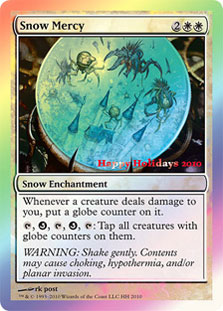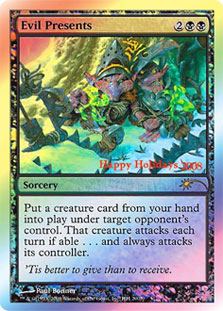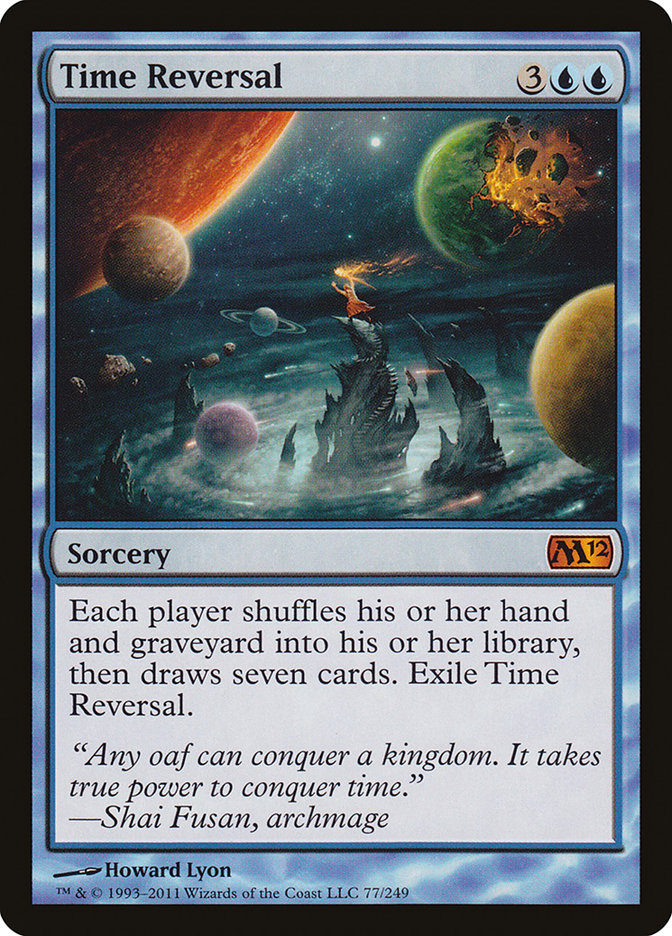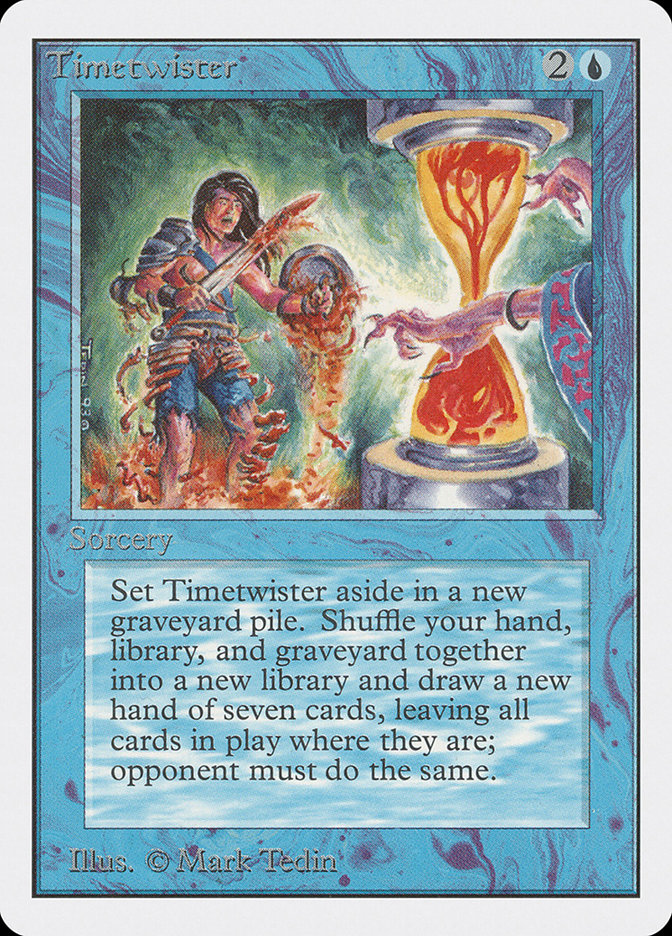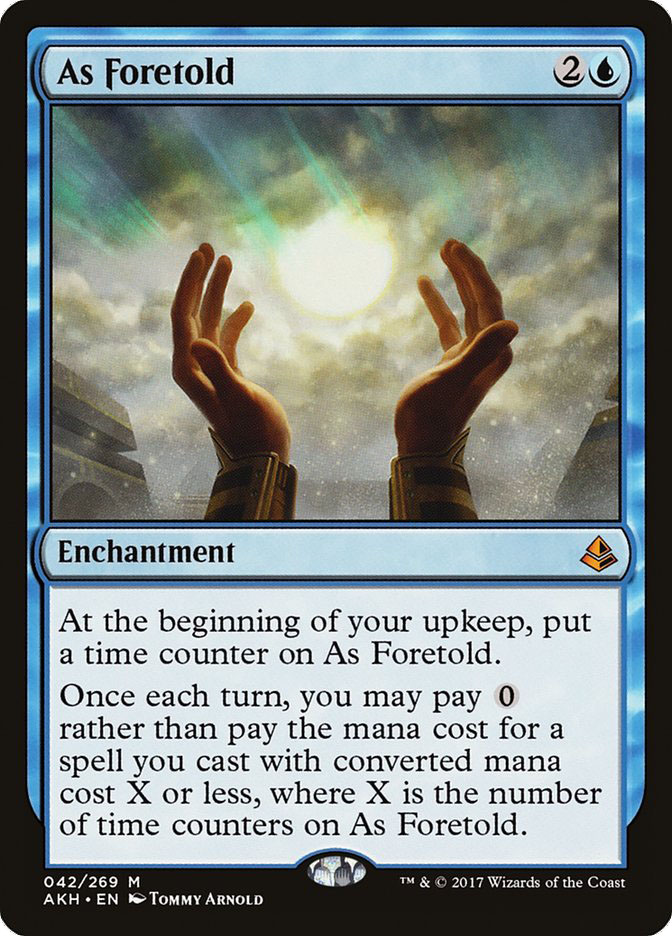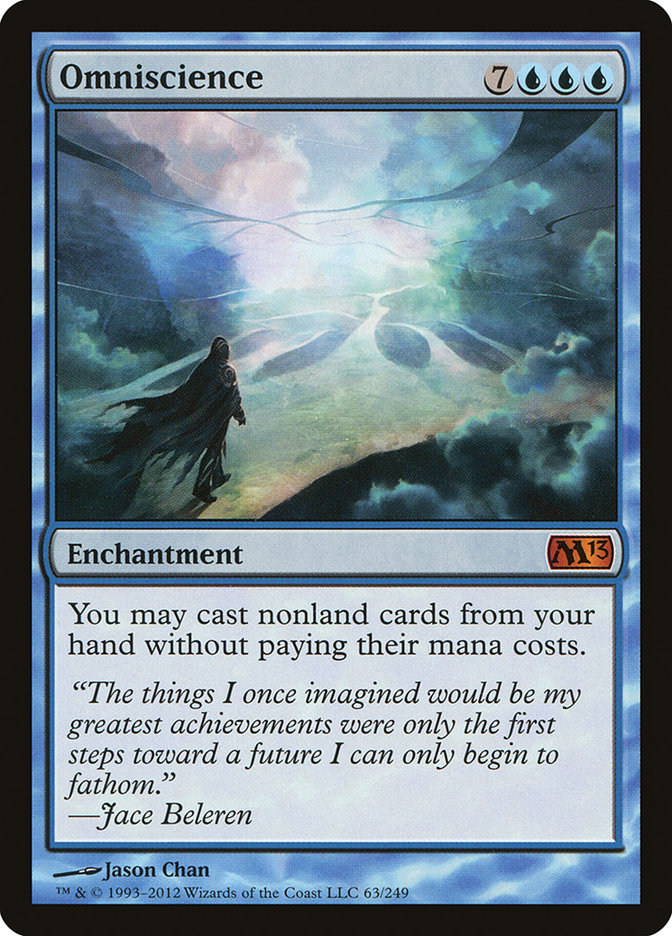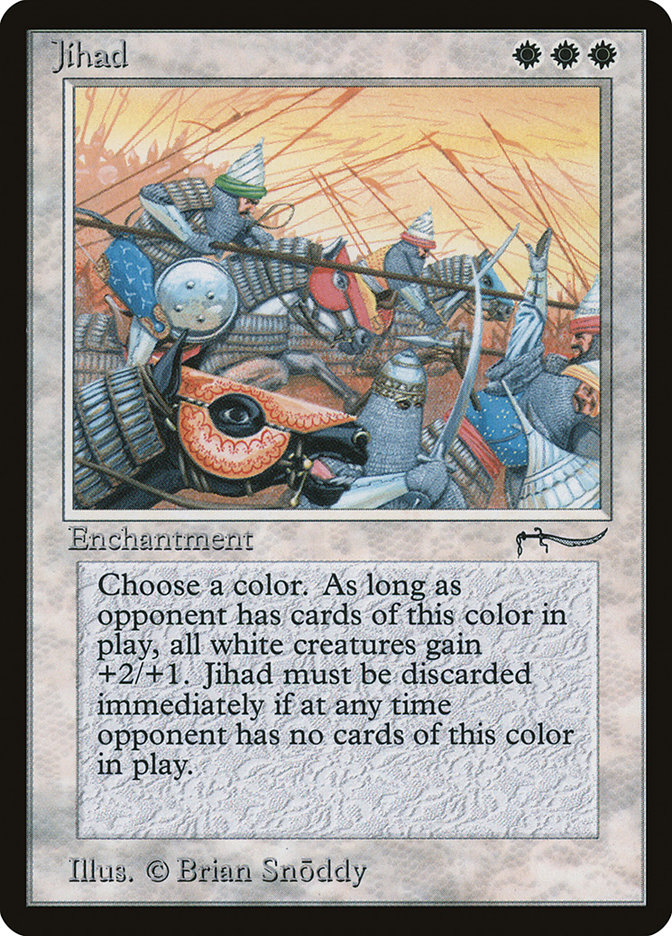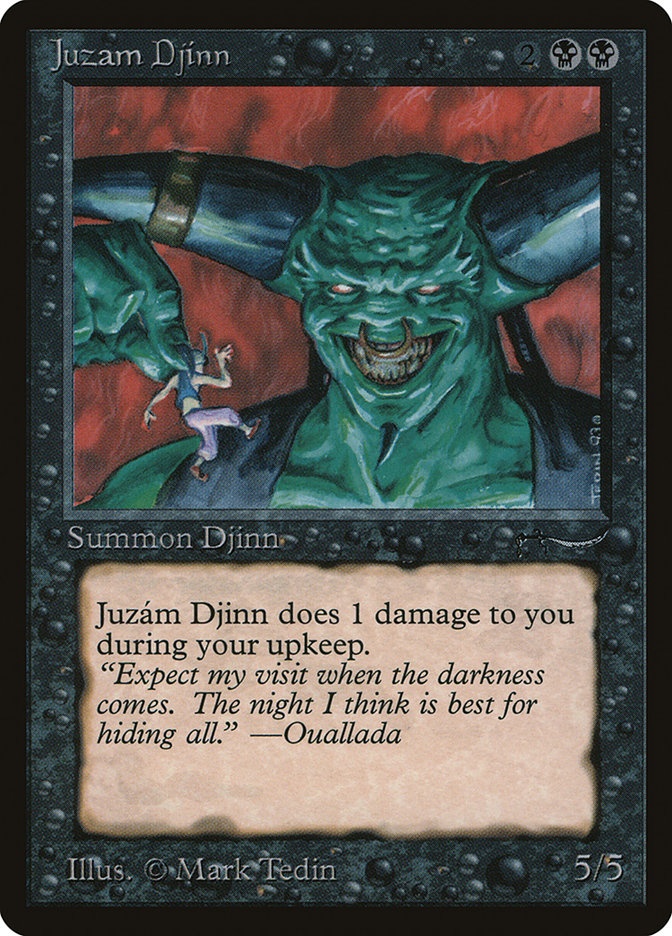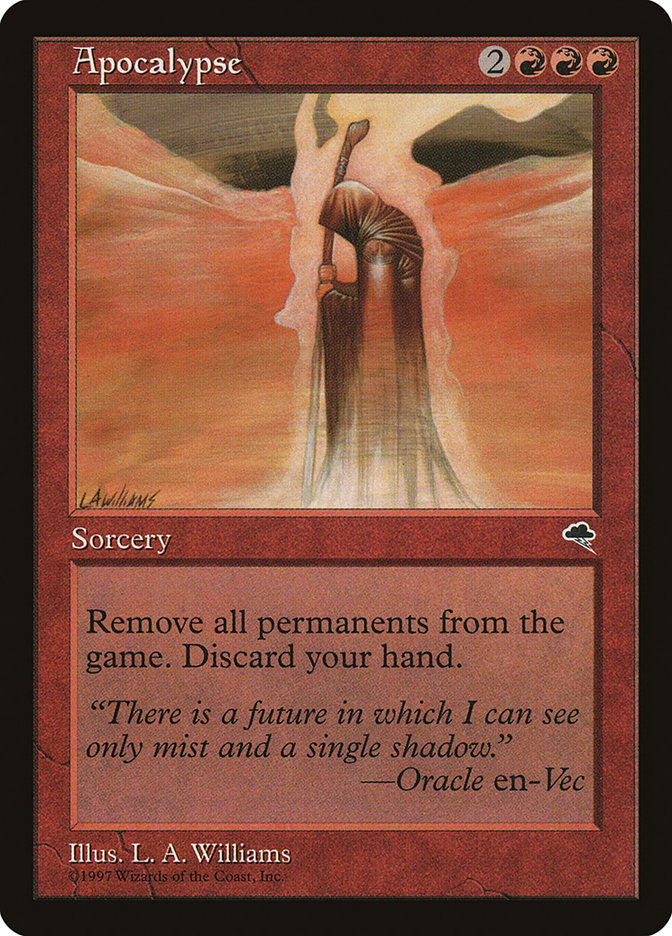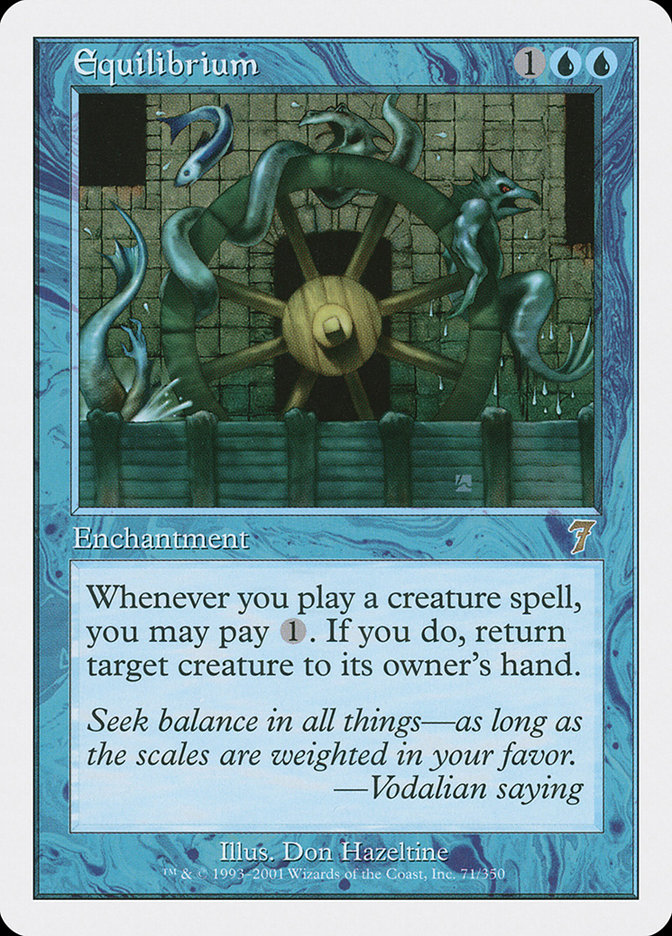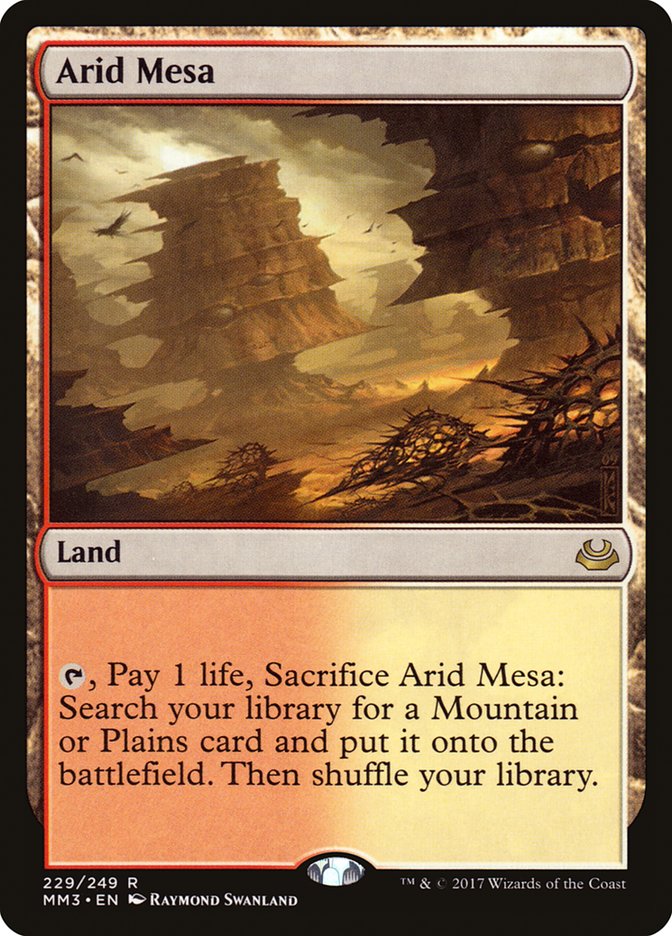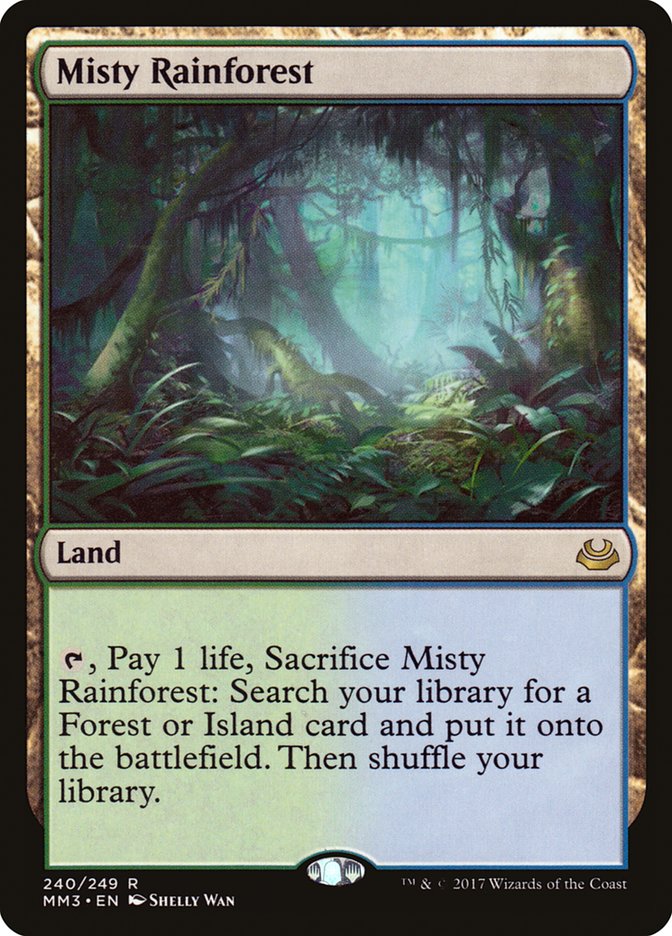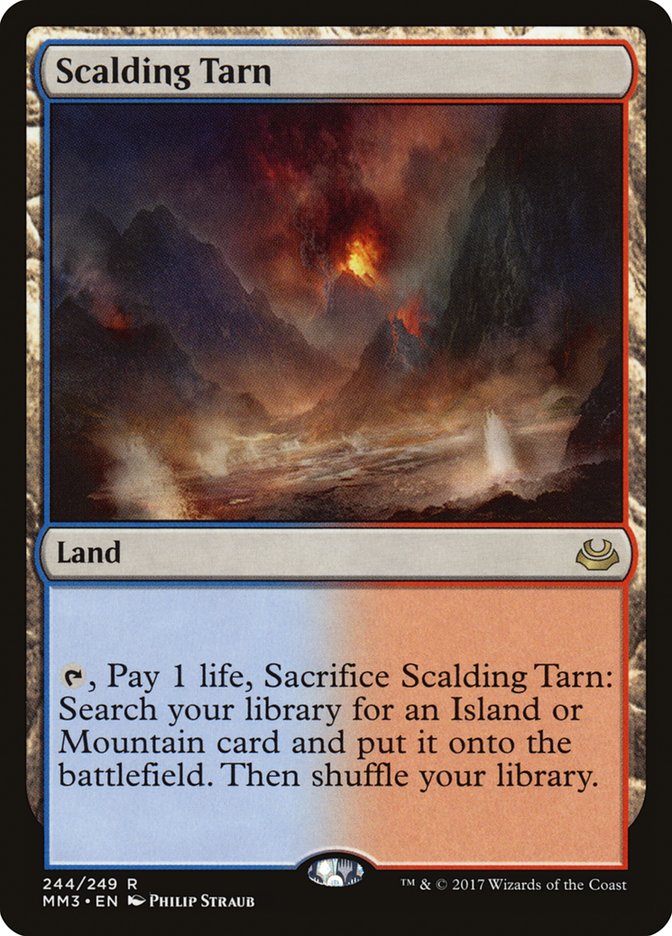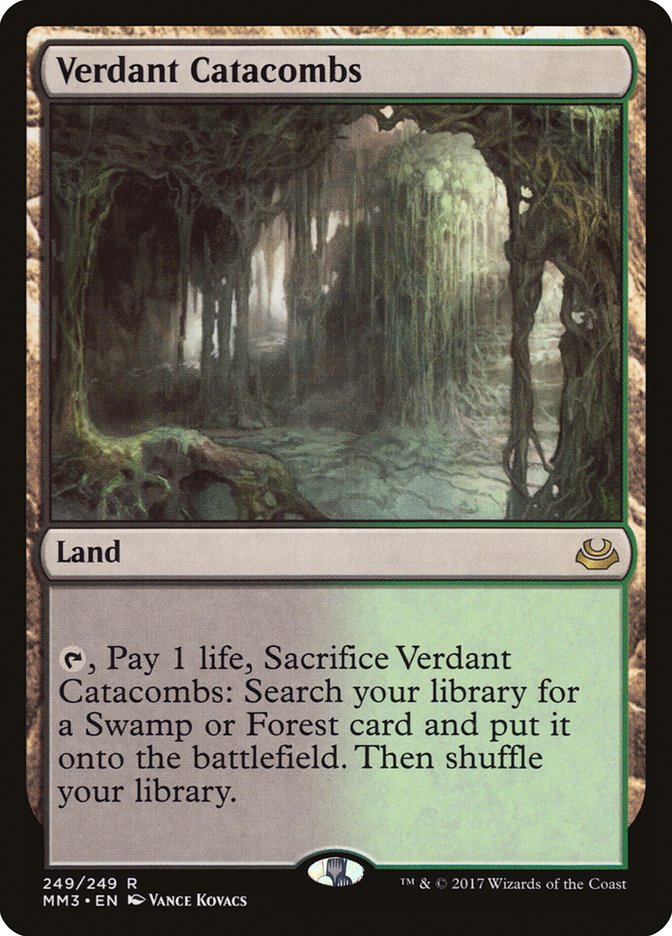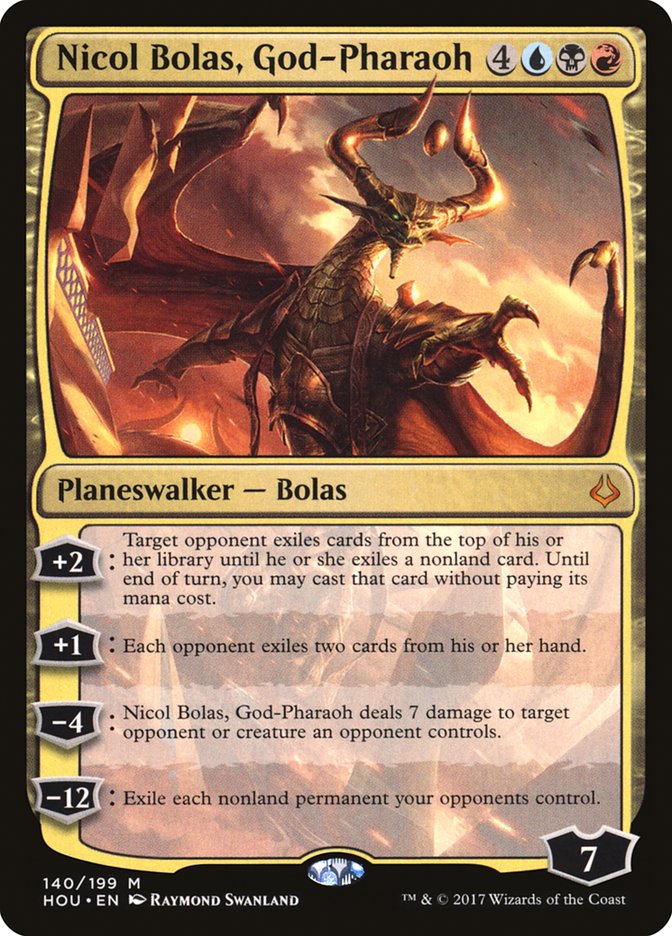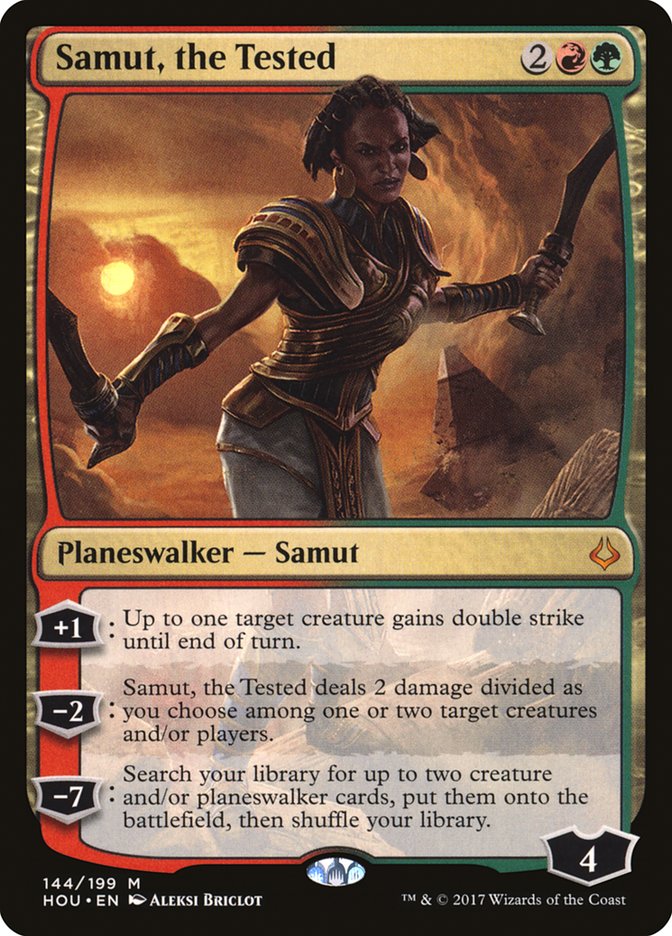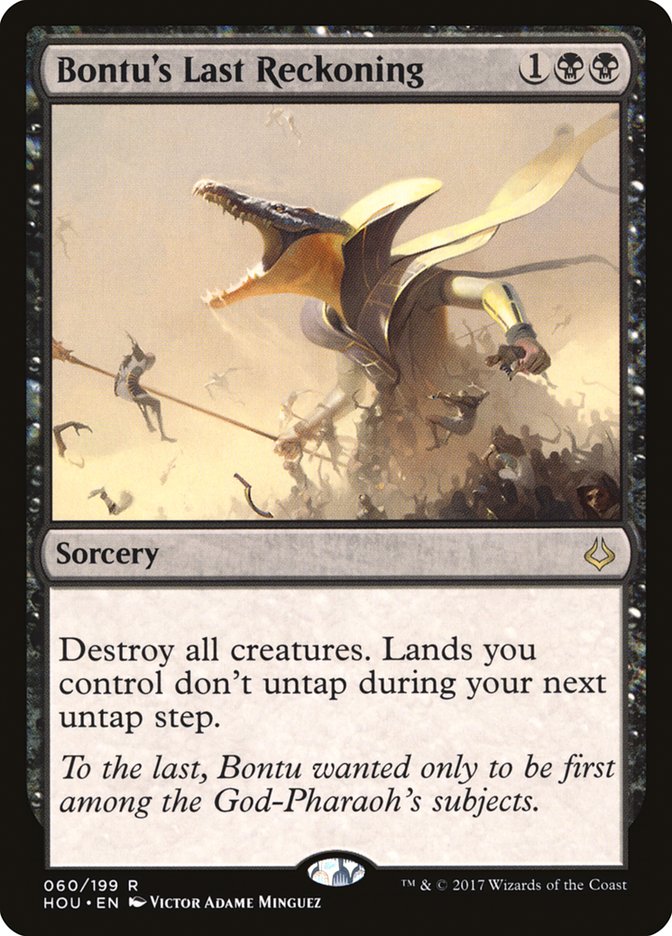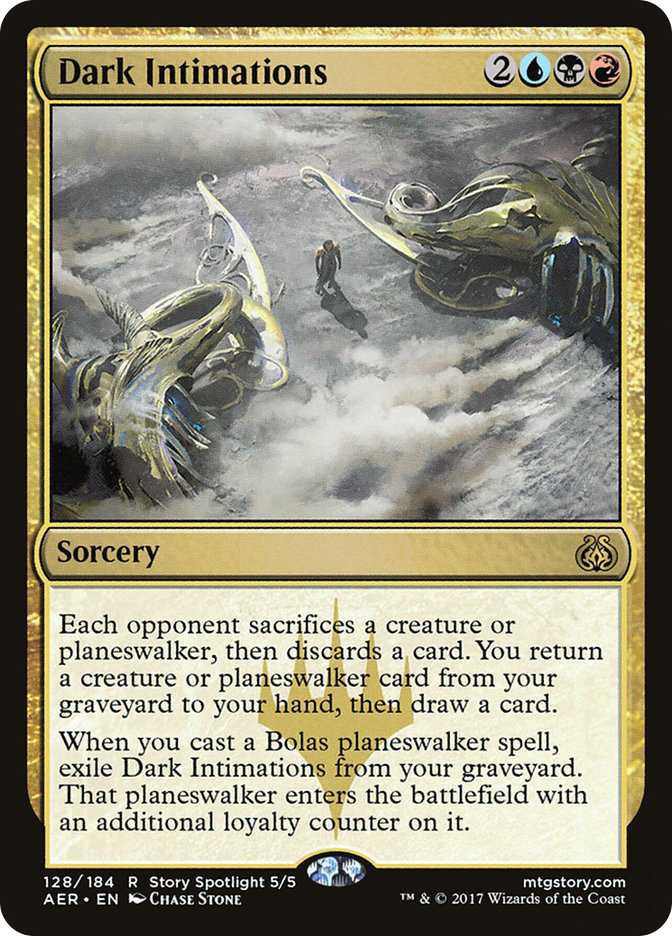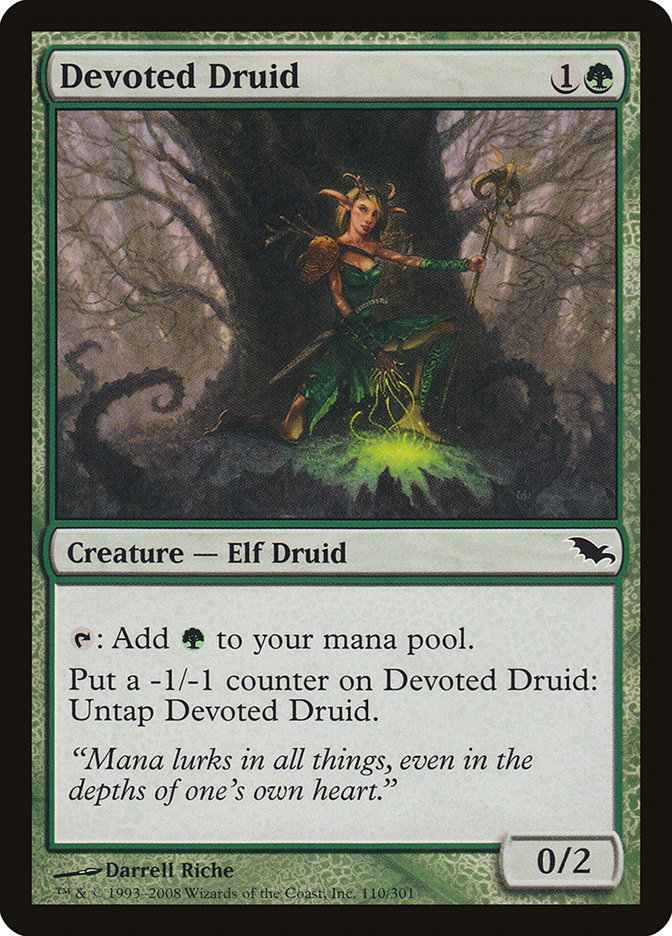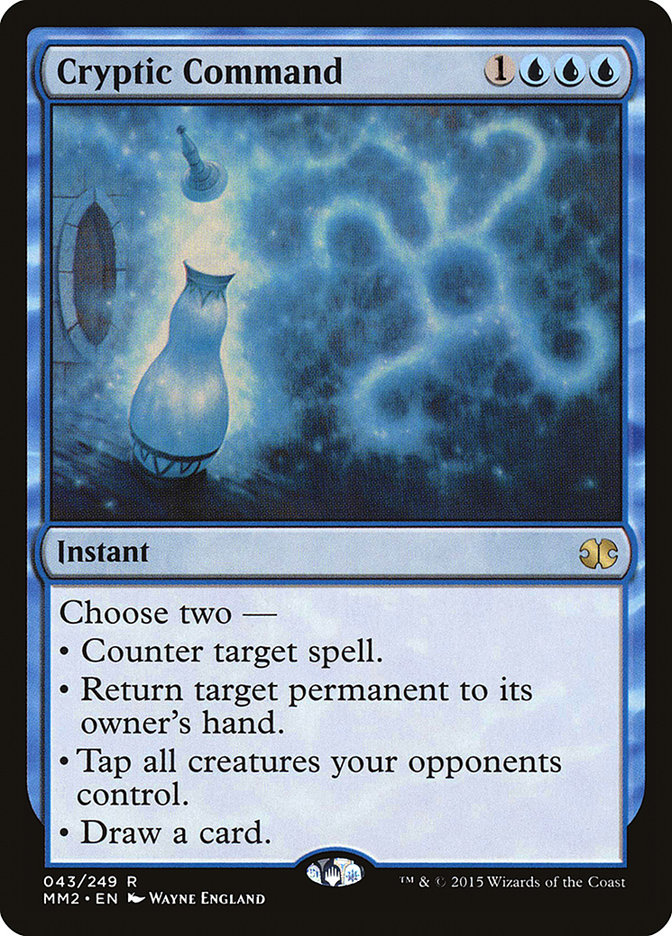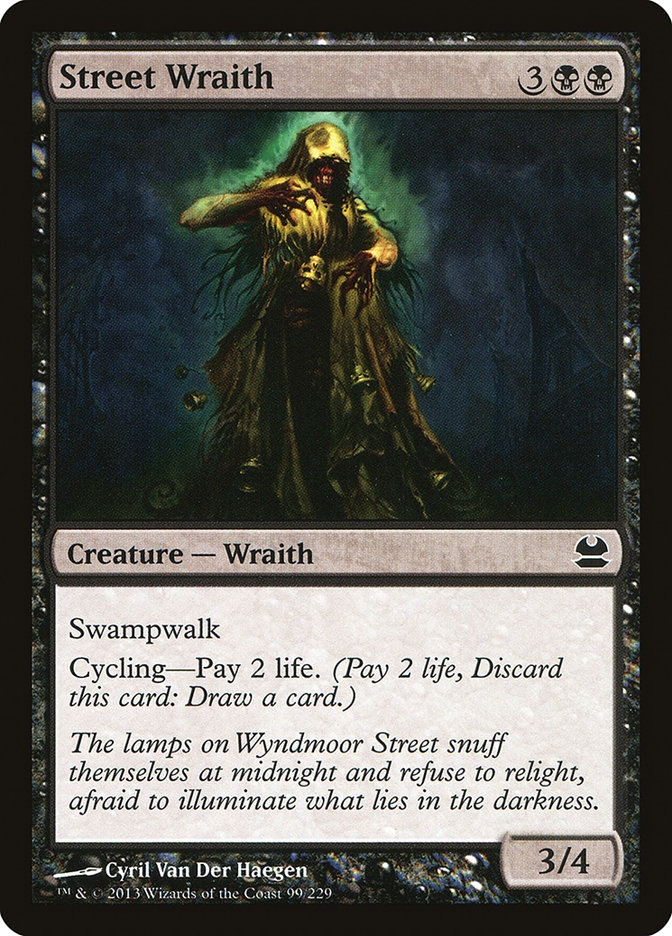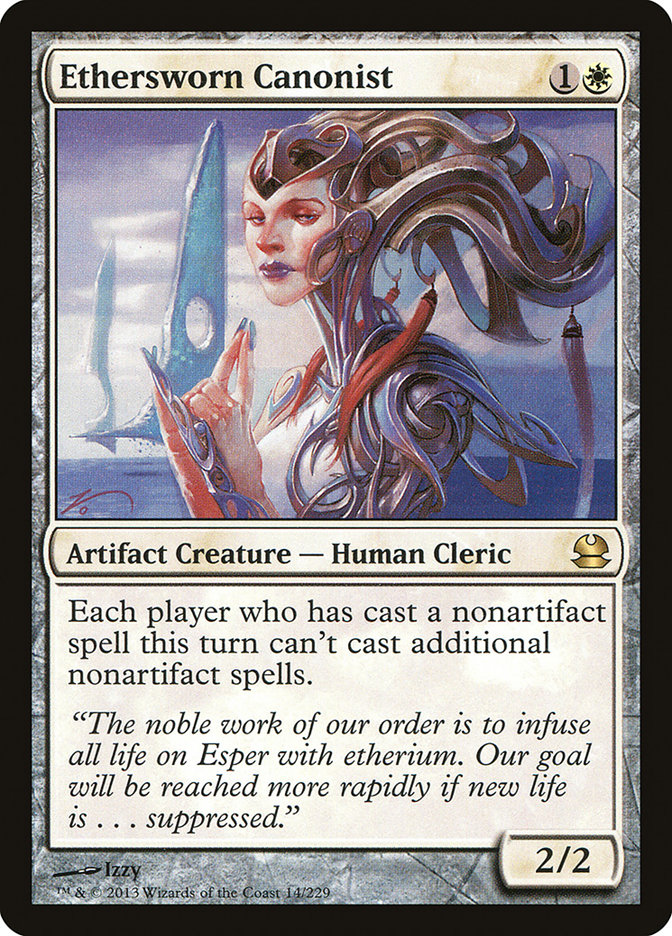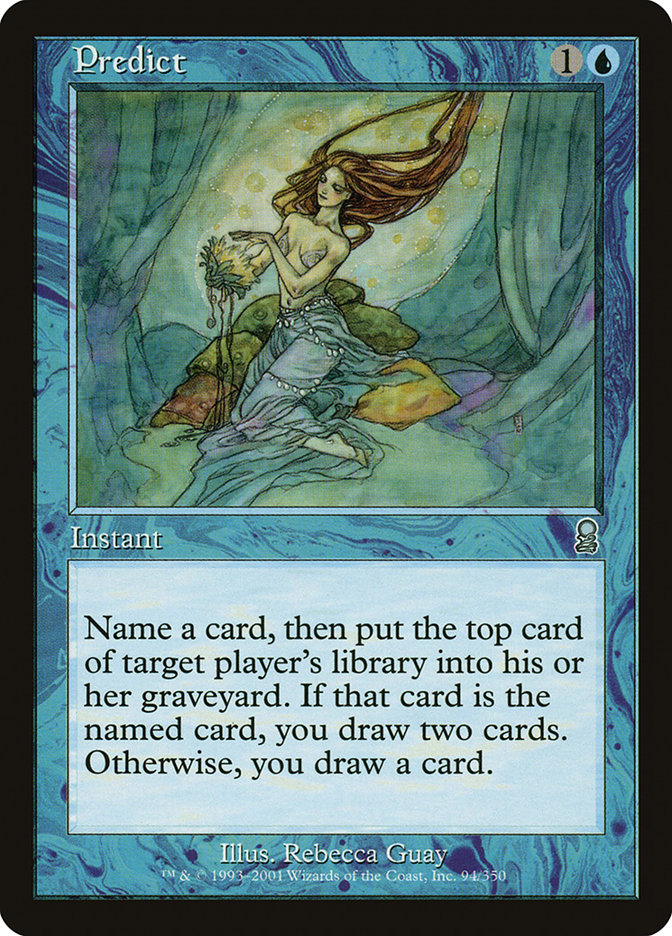How much time do you spend wandering around in Magical Christmasland?
Don’t get me wrong; Magical Christmasland is a wonderful place to visit. In Magical Christmasland, you always have perfect mana, your opponent plays into every one of your traps, and your late-game cards show up right on time. Versatility is irrelevant, because you always have the perfect answer for every threat. The cocoa is hot and the fire is crackling and there are always presents under the tree.
But as any good card evaluator knows, spending too much time in Magical Christmasland will lead you to misunderstand the downside of a card. Time Reversal is a good example of this sort of thinking.
It looked so much like Timetwister that the pre-order price was pushing $30 and combo players spent weeks dreaming about all the broken stuff they’d get to do with it. Instead, the card never did anything at all. If you want a copy now, it’ll only set you back $1.50.
Think my reference is too dated? The same exact process is currently unfolding with As Foretold, which is at $7 and falling after starting at—you guessed it—$30. And while I still think that As Foretold has a decent chance to make an impact at some point, you’re pretty happy if you didn’t buy in when it was first previewed.
We spend a lot of time talking about upside, but we rarely evaluate how a card’s value floor affects its potential as a short-term spec or a long-term hold. How much time should you spend thinking about downsides and worst-case scenarios? Which specs are the safest, and when is the right time to take a big risk regardless of the consequences? December is six months away, so it’s time to take a long look at what happens when Magical Christmasland is the furthest thing from our minds.
Identifying Risk Factors
What makes a card drop in price? It’s almost always going to be one of these seven factors:
1. A failure to meet expectations. I’m not saying that it’s never right to pre-order a card, and there are examples of hidden gems in every recent set. Unfortunately, the sad truth is that the most exciting cards are never worth more than they are on the day they’re revealed to the world. Magic players seem like a pessimistic bunch by and large, but maybe this is evidence of the opposite.
2. A saturation of initial supply. Plenty of exciting new cards do end up making an impact, but they still drop in price during a set’s first three or four months in print. Why? Because many, many, many people open booster packs, but only a few of those players go on to build a specific Standard deck. This is why so many sets seem to “bottom out” around the time the next expansion is released.
3. A set rotation. Standard is historically the most popular format, and 99.9% of cards lose value once a set rotates. This holds true even for cards that see more play in Modern than Standard, despite the insistence of many otherwise-shrewd traders. For example, Kolaghan’s Command dropped from $20 to $5 last fall before rebounding in January. The only cards that don’t drop at rotation are those that are purely casual or Eternal plays, like Godsend and Omniscience.
4. A shift in the metagame. Decks rise and fall, taking cards on wild shifts in value. Chandra, Flamecaller broke $30 last April, bottomed out at $4 a few months ago, and is currently at a fairly robust $10. If a card is valuable because it’s being used in one of a format’s best decks, that position is always going to be at least somewhat tenuous.
5. A reprinting. Competitive cards that are reprinted in a Masters set tend to lose about half their value. Casual cards can be hit much harder. Adarkar Valkyrie was over $10 when the first Modern Masters came out—it’s a bulk rare now. And between the Masters, Commander, Conspiracy, Masterpiece, and From the Vault sets, this is becoming a very common occurrence.
6. A ban. This is the rarest reason for a card to lose value, but it can be especially brutal when it hits. Deathrite Shaman was a trendy long-term spec before it got the axe in Modern, and plenty of people were shocked this winter when Standard had its first bans in years. Commander bans can hurt, too, as my closetful of Sylvan Primordials can attest. The good news for speculators is that you should always be trying to sell at the top of the market, and cards are rarely banned unless they have a long run of sustained success. By the time a card is banned, you probably had plenty of time to divest.
7. Power creep. This is slower and more long-term than a metagame shift, and it only affects casual and Eternal cards. Over time, though, some cards are just going to be permanently outclassed by better and better options. This has mostly affected creatures so far (remember when the Dragons from Invasion like Treva, the Renewer were reasonable commanders?), but it’s happened to other spells as well. Unless you’ve got a lot of tokens, for example, Always Watching is a strictly better Glorious Anthem. Power creep is especially prevalent in Commander, where decks have become more and more streamlined since Wizards of the Coast began printing cards with the format specifically in mind.
Each of these factors is fairly obvious by itself, but putting them together allows us to draw some really interesting conclusions about risk:
If you’re speculating on a brand-new card, you have to be cognizant of all seven risk factors. Granted, reprinting and power creep aren’t going to be an issue for many years, but there are many, many things conspiring against your ability to make a profit. This is why I tend to focus on $2-and-under rares and $5-and-under mythics when I write my set reviews. Too much can go wrong with $20+ cards.
Magic financiers love speculating on Legacy and Modern cards because they take the first three risk factors out of the equation. Before the Masters sets became a regular thing and cards were only reprinted occasionally, older cards were massively hoarded because the risks were so low. It’s a little harder these days, but your Modern holds still have fairly minimal risk.
Do you still ignore casual and Commander cards? You shouldn’t. Unless your casual spec targets are Standard-legal, you can blow off the first four risk factors entirely. The fact that the casual “metagame” is so diverse helps keep your risk profile nice and low.
Every week, it feels like there’s another buyout of a random card on the Reserved List. Many of these cards aren’t even that good: this week, the Arabian Nights rare Jihad was bought out. These buyouts make more sense once you realize that casual cards on the Reserved List have managed to completely dodge the first five risk factors. And the Old School format that’s been driving the price of cards like Juzam Djinn? It’s the perfect way to negate the seventh risk factor as well. No wonder my binder of Legends and Antiquities cards has appreciated so much!
Now that we have all of this information, how can we apply it? While it’s tempting to say that the answer lies in ignoring everything that isn’t on the Reserved List, that’s not a feasible option for most of us. It also ignores all of the market factors that we’re not explicitly discussing this week: demand, upside, etc.
One of the points I’m trying to make is that not every $30 card carries the same amount of risk. If you’re dropping that cash on a brand-new card, there’s a lot that can go wrong. But there are plenty of cards in that price range that carry a minuscule amount of risk: Thoughtseize is just $25, and I can’t imagine it drops below that point until its eventual reprint. Too many of the risk-averse speculators I know never consider buying cards that cost more than $5 or $6, but it’s quite likely that a Standard-legal card in the $5 card is a lot riskier than an older card that costs six times as much. In order to continue this discussion, we need to talk about –
Finding Floors
I use the term “floor” a lot in my articles, but I’ve never discussed it with much specificity. So here we go: when I talk about a card’s floor, what I’m talking about is its lowest realistic price point. The true floor for every card is as kindling in the post-apocalypse, but that doesn’t make for a very useful discussion. Instead, I consider each of the seven risk factors and attempt to figure out 1) how likely each risk is, and 2) what effect (if any) that risk will have on a card’s price if things go south.
Let’s begin at the end. Absolute worst case, bulk rares are always worth $0.10 and bulk mythics are worth $0.25. This is what StarCityGames.com pays on their buylist, and the rate hasn’t changed in years. I don’t even think the death of the game would change this. Magic has been popular enough for long enough to ensure that the market’s low end will always have buyers.
These figures are important to remember because they give us a hard floor on all of our buys. Even if the worst-case scenario occurs, we won’t get less than $0.10 per rare and $0.25 per mythic. I did some shopping around, and I was able to find some of the worst rares in Amonkhet for as low as $0.14 per copy and the worst mythics as low as $0.40. That seems kind of pricy for some terrible cards, but remember: these numbers don’t have their floors factored in yet. In reality, you’re paying is $0.04 per rare and $0.15 per mythic for the chance that they’ll pay off at some point. You don’t want to do this if tying up your money long-term is a concern, but it explains why so many people (including me) love to speculate on bulk rares and mythics.
Of course, most interesting Magic cards aren’t going to end up as bulk. So what figures can we use instead to discuss realistic price floors for our better specs?
The best tools we have at our disposal are price charts. I especially like the ones at MTG Goldfish, a site that does a great job measuring both paper and MTGO prices over time. The truth is that most Magic cards don’t fluctuate wildly—they rise a bit, fall a bit, and spend most of their time at equilibrium. If you’re dealing with a card that is at least three months old (past the initial hype and printing), your best bet is to start with the chart. If the trend looks stable, you’re got a good sense of the current price floor.
After that, take a look at the risk factors. The newest cards are the most uncertain, because we don’t know what their floor is yet. A staple that sees play in one good deck is at greater risk from a shift in the metagame than a staple that sees play in five good decks. A casual card that was printed in just one small set fifteen years ago is riskier than one that has been printed five or six times and has still held its value. A card that was just printed is less likely to be immediately reprinted. A card that isn’t part of a game-winning combo is probably not facing a ban any time soon.
Ultimately, then, my favorite risk-averse specs are multi-deck staples that are important in both Commander and Modern and were just reprinted a couple of months ago. Hmm…I wonder if there are any cards that fit this bill right now?
You’re not going to get rich buying these cards at retail today and flipping them a year or two from now, but you will get modest gains while maintaining a tiny risk profile. If avoiding loss is your biggest worry, these are the sort of specs you want to consider taking on.
Of course, making money isn’t the same as not losing money. If you’ve ever set up a retirement account, you’ll have noticed that most brokers will encourage younger investors to put their money in higher-risk accounts with the belief that this is the best way to make money over time. If you’re an active investor, you’ll want to spend most of your time chasing upside: not living in Magical Christmasland, per se, but making smart investments that have a shot at a considerable payoff.
If you’re just looking to slowly increase the value of your cards, however, risk should be on your mind when you’re at the trade tables. Consider downsides, be aware of which cards have the lowest floors, and always work toward building the most stable collection possible.
This Week’s Trends
Let’s start with the biggest news of the week. Hour of Devastation won’t be here until early July, but WotC (inadvertently or not) has already previewed three of the set’s most exciting cards. Let’s take a look:
Nicol Bolas, God-Pharaoh – $29.99
I have little doubt that Nicol Bolas, God-Pharaoh will see significant Standard play. Seven mana in Grixis colors is a hefty price to pay, but man-oh-man is this thing worth it. It’s not format-warping like Emrakul, the Promised End, but that seven damage is going to be a common way to finish games at some point during the card’s Standard legality. The versatility here is pretty great, too.
The big question for now is how Nicol Bolas will exist alongside Aetherworks Marvel. It’s a good hit off an active Marvel, but it’s still probably a tier below Ulamog, the Ceaseless Hunger and it’s unclear whether or not the current crop of Temur Aetheworks decks will want to dip into black for this. If Marvel were out of the format, I suspect we’d start to see a Grixis control deck show up, but as things stand right now I’m not convinced it’ll be a thing until a ban or a rotation.
Regardless, there’s virtually no financial upside for Nicol Bolas at $30. Hold off for now, and buy in around the first week of September if the price drops enough. Nicol Bolas, God-Pharaoh may not make a huge impact this summer, but I suspect it’ll become a key part of the post-Aetherworks Marvel metagame.
Samut, the Tested – $14.99
Samut could have used a little more testing if WotC wanted her to become a major player in Standard. I suppose Samut might find a home in some sort of G/R Energy build designed to take advantage of her +1 ability, but this is a pretty weak -2 and it’s going to take a lot to get her all the way to her ultimate. Best-case, Samut is a two-of or three-of in a Tier 2 deck.
I think Samut, the Tested might find a home in Modern, where you can get a pretty saucy ultimate once you have a Doubling Season on the battlefield. That probably won’t be a good enough strategy to make this a good $15 pre-order, but I’ll grab a couple of sets once it drops down to $5 or so. In the meantime, I suspect Samut’s price will slowly start to erode.
Bontu’s Last Reckoning – $3.99
Bontu’s Last Reckoning is the most fascinating of the three cards on this list. The drawback is very real, but once you start meddling with the game’s fundamental truths (Wraths Shall Not Cost Three Mana), you run the risk of creating a card that is broken across multiple formats. Considering the recent issues that WotC has had with balancing cards recently, I’m willing to believe that Bontu’s Last Reckoning will either be unplayable outside of a few corner-case sideboard situations or a multi-format all-star.
Financially, your best bet is to read everything you can from the pros who start testing with Bontu’s Last Reckoning. If you start to see players you respect gushing about the card’s potential, you should buy in ASAP. This may seem obvious, but there was a full week of really good press about Smuggler’s Copter before the price broke $5.
Why not just buy in at $4 right now just in case? You can certainly do that if you’re feeling adventurous, but the initial reviews have been disappointing and card’s price floor is very low. I’d rather buy in on the way up and risk missing out on a few dollars of potential profit if it means that I can avoid the boondoggle that this card will become if it’s a big miss.
Speaking of big misses, I’m much lower on Dark Intimations now that we know what Nicol Bolas, God-Pharaoh looks like. I had hoped the additional +1 loyalty would end up mattering a lot, but getting a second shot to -4 if Bolas isn’t hurt between turns isn’t enough to make me love the clunky sorcery. Percentage-wise, Dark Intimations was the biggest gainer in Standard this week, but it’s still readily available for less than a buck. I’ll be looking to trade away my copies before the Prerelease.
Other than that, there haven’t been many gains in Standard recently. Anointed Procession and Sweltering Suns saw modest increases, while a lot of cards saw losses between ten and twenty percent: Gideon of the Trials; Liliana, Death’s Majesty; Relentless Dead; Glorybringer; Pull from Tomorrow; Liliana’s Mastery; Commit//Memory; Plague Belcher; Rhonas the Indomitable; and Nissa, Steward of Elements. I expect these cards (and most of the Standard index) to keep slowly dropping as long as the format remains fairly stagnant.
Creatures (8)
Planeswalkers (2)
Lands (23)
Spells (27)

Temur Aetherworks continues to be on a tier by itself, and interest in the format has started to drop back toward where it was during the Saheeli Combo era. A few weeks ago, I thought that Aetherworks Marvel was a very long shot to be banned. Since then, the deck’s share of the metagame has only increased. If things don’t pick up soon, we might see another shake-up before long. I’m selling all the Temur Aetherworks pieces that I’m not using, just in case it’s banned prior to the release of Hour of Devastation.
Here’s some better news: Modern is great right now, and the price charts are showing off the format’s diversity. Chalice of the Void, Thoughtseize, Cryptic Command, Mox Opal, Cavern of Souls, Devoted Druid, and Death’s Shadow have all seen small gains this week. None of these are major spikes, but the format appears to be bucking its normal seasonal trends and the Modern market is pretty robust. Buying or trading into Modern staples feels pretty safe to me at the moment.
The two biggest Modern movers of the week? Street Wraith and Ethersworn Canonist.
Street Wraith is played in multiple Death’s Shadow variants as well as Living End, two strategies that have been putting up good results in recent days. Expect that spike to last. Ethersworn Canonist has been rising in price for weeks, and I urged you all to buy in back in mid-May. Canonist is mostly a Legacy card, but Commander players love it and it sees occasional play in Modern as well. Expect it to end up in the $15-$20 range until it’s reprinted at some point in the near future.
Speaking of Legacy, Predict saw a heck of a spike this week thanks to the play it sees in the post-Sensei’s Divining Top version of Miracles. I don’t know how much actual demand there is here, but this has the look of a buyout to me. I’m selling into hype. Jihad, Hellfire, and Planar Gate all spiked last week as well, probably due to normal low-supply Reserved List meddling. This sort of thing has been going on for years, and the cards almost always settle somewhere in between the old price and the post-spike figure. Sell into the hype if you can.


